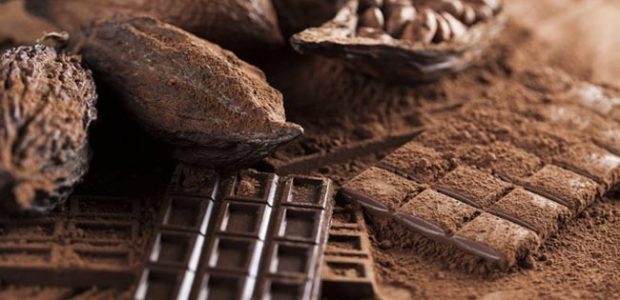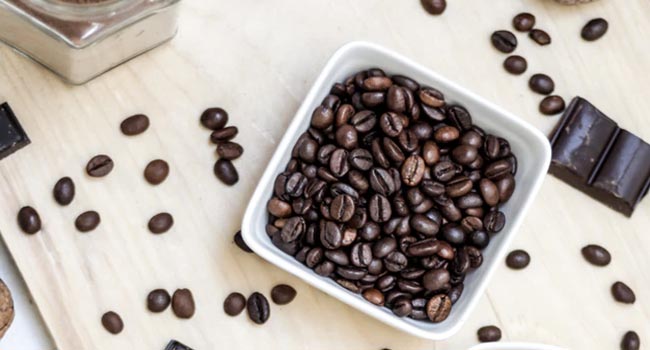
Generally, the top 3 most popular flavors belong to vanilla, chocolate, and cookies ‘n cream. However, the chocolate flavor is particularly the one that’s always present in selections of almost every dessert. In cakes, ice creams, milkshakes, waffles, and a lot more. They are used as a key ingredient not only in desserts but in other food products as well. This just goes to show that the chocolate-making industry has been expanding at a wider depth over the years.
Chocolate comes from cacao beans that emerge from cacao plants. Quick history: cacao plants were first cultivated by the Mesoamericans. They brewed a foamy and sweet ‘chocolate’ drink out of the cacao beans the came from Central America’s cacao plants founded in its tropical rainforests. After the beans had gone through fermentation, roasting, and grounding, the formed substance was mixed with vanilla, honey, spices, and water. Voila! A chocolate drink.
How Chocolate Is Made
As mentioned, the people who first attempted to create a chocolate product from cacao beans performed a certain procedure before enjoying their tasty drink. Today, the only difference is that these steps or the process undertaken to produce chocolate products were made easier, more convenient and faster with the help of machinery. The equipment being used provides great assistance in cracking shells, grinding the beans or even in blending a large amount of mixture made up of the ingredients.

To summarize the process of chocolate making, here are the 6 major steps that you need to know about:
Harvest, Fermentation, and Drying
The initial step in the chocolate production is the manual harvest of cacao pods – meaning, it is still done through bare hands. In tropical and subtropical areas like Central America, or in Africa as well, cacao trees continually make buds that are used in fabrication. The only thing to watch out for that can affect their growth cycle is the climate condition.
Carefully, the mature pods need to be identified before cutting them from the tree. It is of great importance that the flower buds do not get impaired or harmed. After that, the pods should be cracked open and both the beans and pulp are taken out of it, then stored in a covered container. The pulp around the bean gets converted into alcohol through fermentation. The yeasts in the air and the generated heat will make this possible.
The alcohol is turned into acetic or lactic acid as the oxygen crowds the container while the beans are thoroughly mixed. The liquid exits the container through its holes and the beans are left to dry. This is where the bitterness of the cacao slowly alters into the chocolate flavor. Sun-drying is done next, but an option to dry with shade and enough air is also possible. Moisture percentage must reach 6 to 7 percent before being bagged and supplied.
Cleaning and Roasting
Before starting out in the manufacturing process, the delivered cocoa beans are tested meticulously. They do a lot of evaluation. Once the beans are ensured to be free from defects, insects, or molds and to have the right size, they get permuted to the form of chocolate liquor.
Industry tasters assess its flavor and aroma. If the beans have passed all the testing procedures, they are cleaned and sent into the roaster. 10 to 35 minutes will do.
Cracking and Winnowing
Roasting parts the shell of the cocoa bean from its kernel. During the cracking and grinding, the shells must be removed. Cocoa nibs are produced as the beans pass through jagged cones and get cracked. Crushing is not done but cracking.
The removing of shells are executed through winnowing – blowing of air – to push them away from the cocoa nibs. Approximately, the nibs carry 53 percent of cocoa butter.
Grinding and Refining
Grinding equipment like the Ginhong mixer is utilized to do the first mill of the beans. The cocoa butter needs to be liquefied. In order to do that, the nibs are crushed (this is where crushing begins). This process leads to the generation of chocolate liquid.
If not all, most manufacturers of chocolate make use of a ‘ball mill’ or ‘roll refiner’ to carry out the second grinding. These instruments greatly diminish the mass particle size and even the globules of each ingredient. The entire concentration must be well-coated by the even distribution of the cocoa butter.
Rolling induces heat that eventually blends and disperses the cocoa butter. In this process, the desired texture and creaminess are defined and worked on. Cocoa butter does not only offer the chocolate flavor itself, but it also grants a cooling effect in an individual’s mouth as it is being eaten.
This step welcomes the addition of other ingredients to the chocolate liquor. Milk, an emulsifying agent such as lecithin, vanilla, sugar, and others. Some flavors like caramel, peanut, strawberry, etc. can also be put into the mixture.
Conching
Ceaseless kneading of the chocolate liquid with all the other added ingredients gives the potential finished product a more enhanced and delicious taste. Through hours or days, the milling inside the equipment is unstoppably encouraged so that the immanent bitter flavor will be eliminated; the smoothness and creaminess are also developed through “conching.”
Tempering and Forming
After the profusion of chocolate is conched, it is then molded and shaped into the manufacturer’s desired form. This can be made into large or small bars, circulars, or any other shape. Plus, candies or other treats are also placed during this step. Packaging and labeling come last.
Conclusion
Chocolates are very popular, yet buyers often do not know how they are processed. This article aims to provide you with knowledge about how chocolates are made – from harvest into the packaging. The process might be tedious as it takes days to get the perfect and savory taste, but the longer it is prepared, the more luscious it can really get. So, patience is the key to a delectable chocolate flavor!
